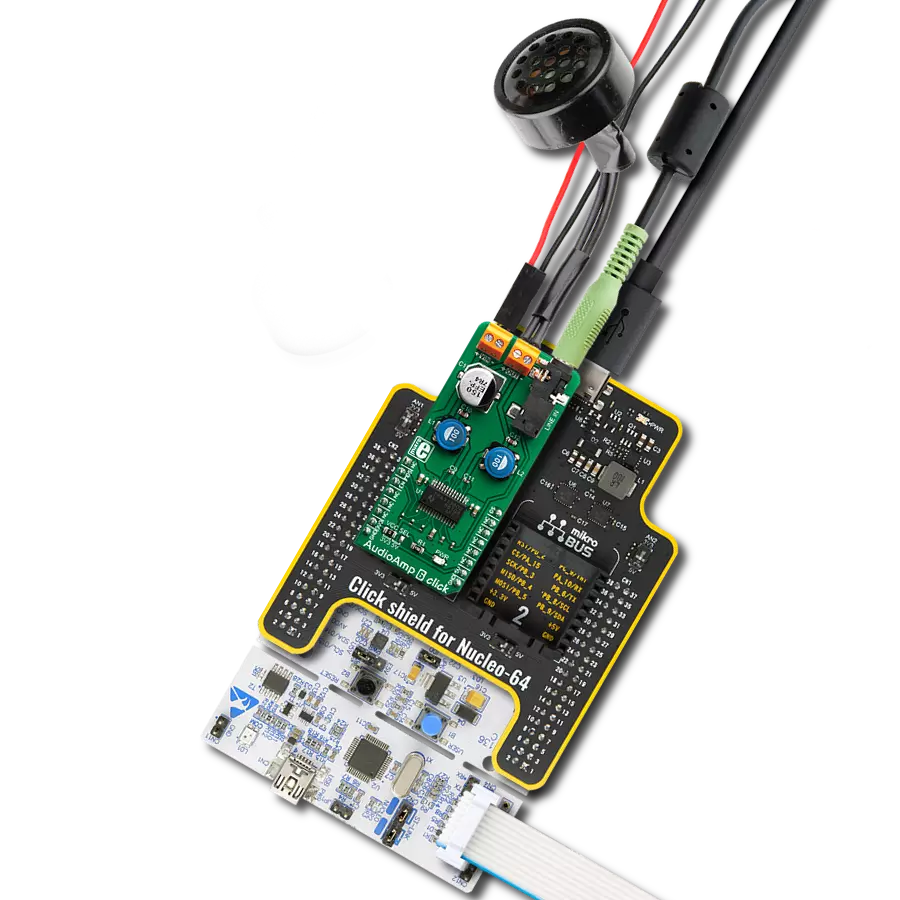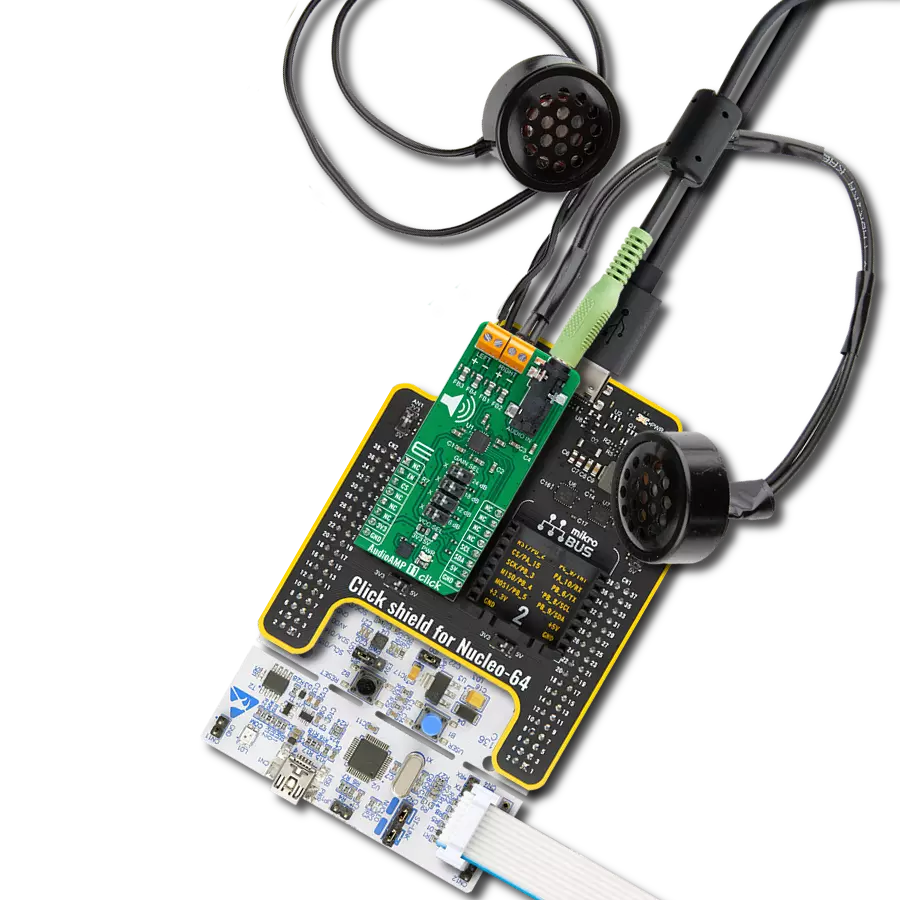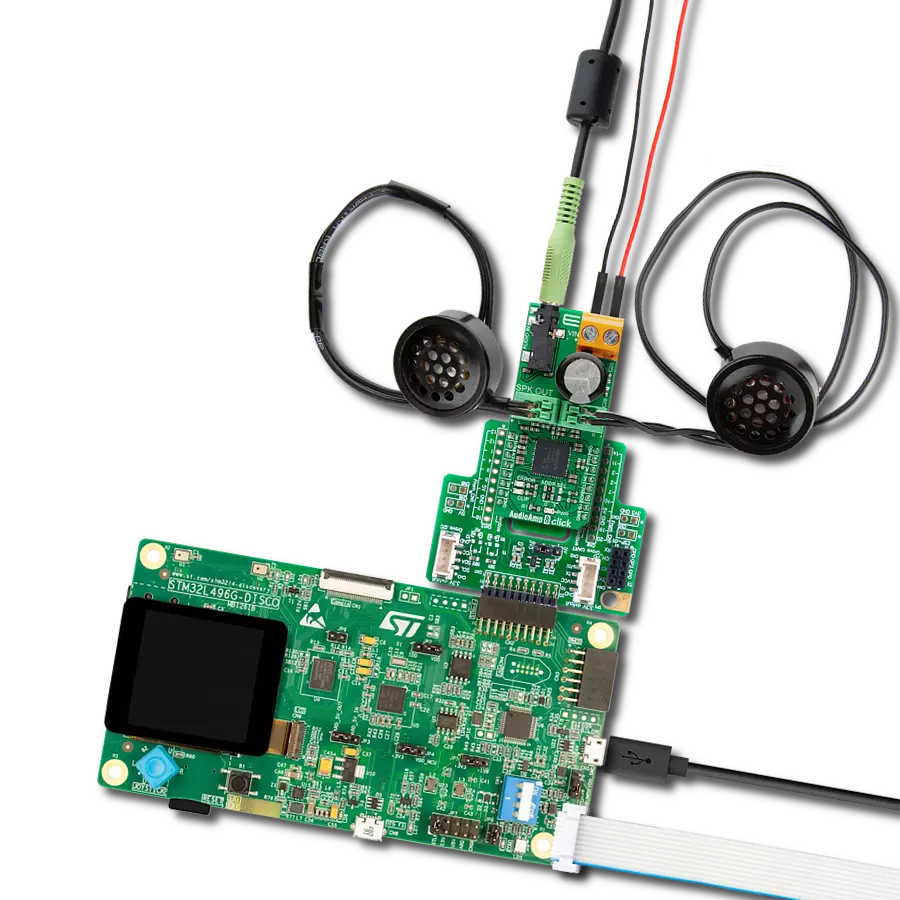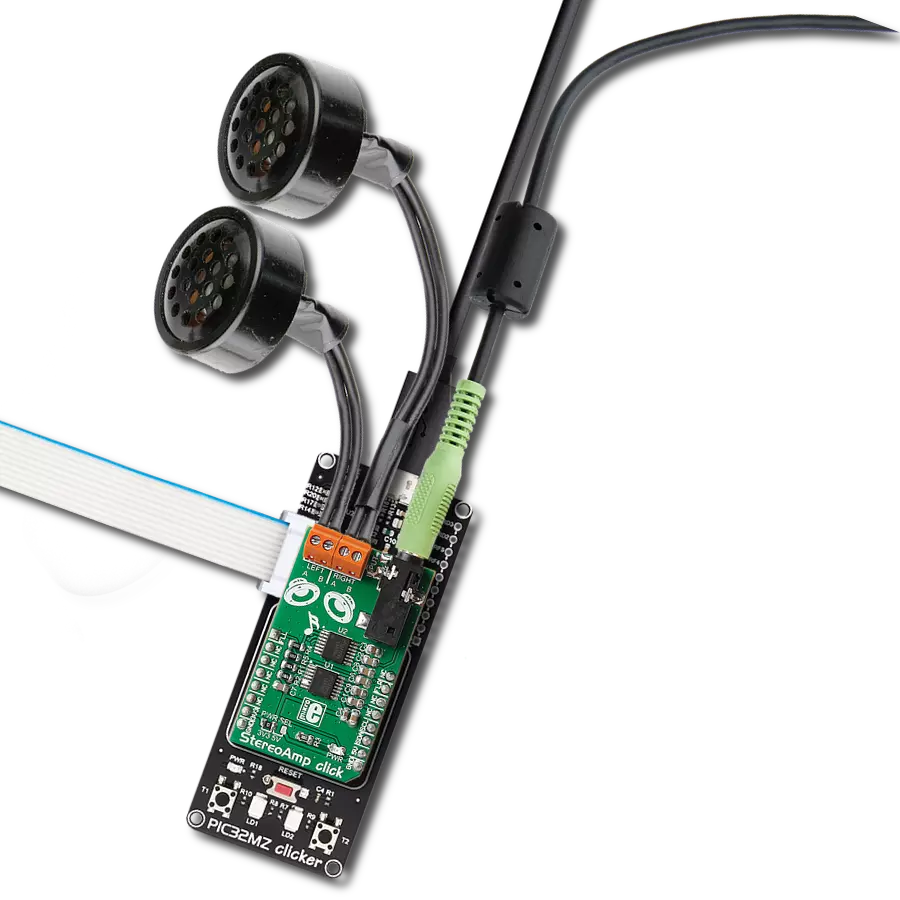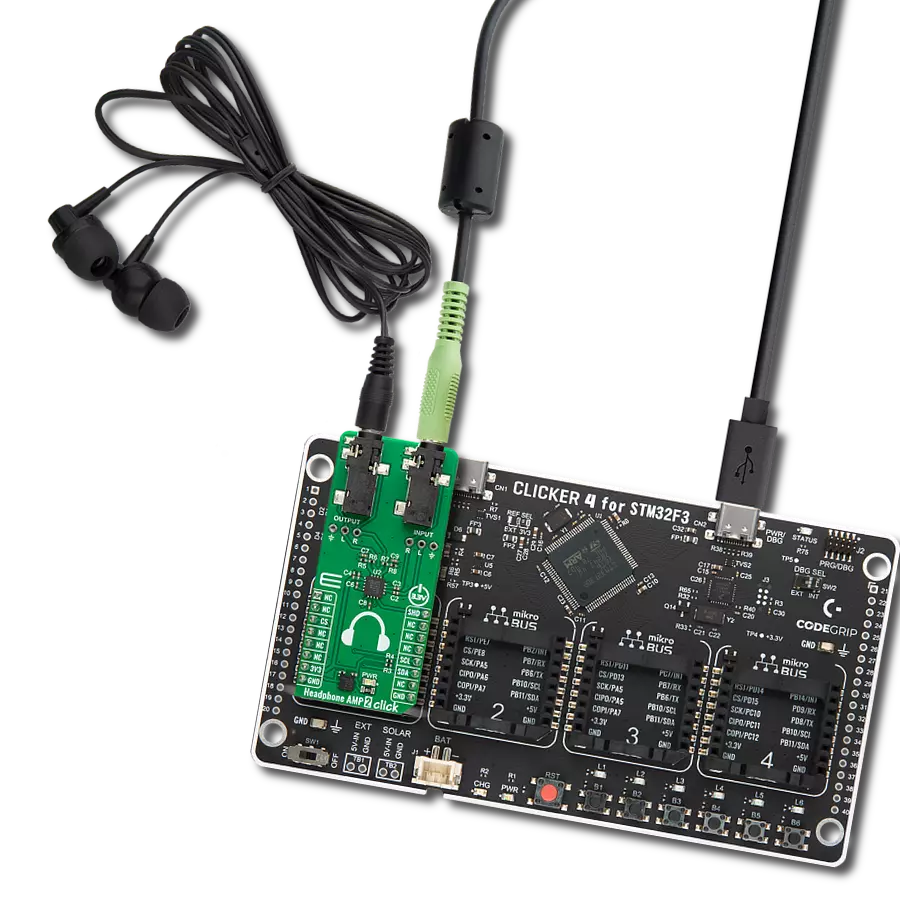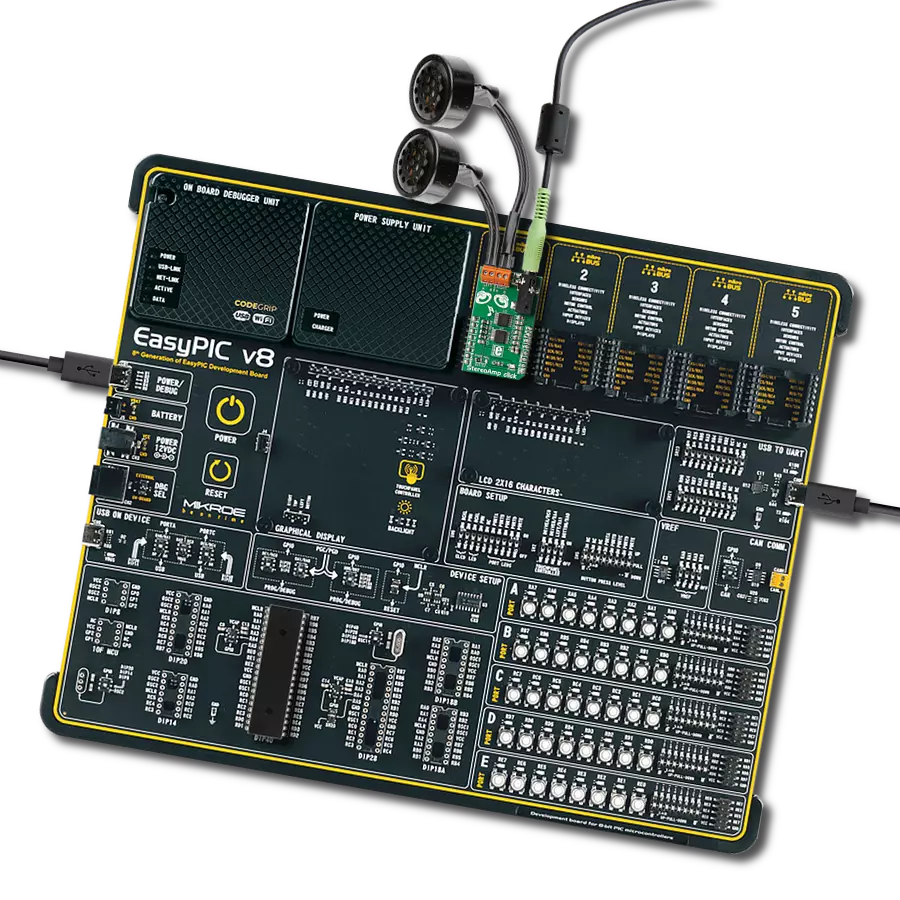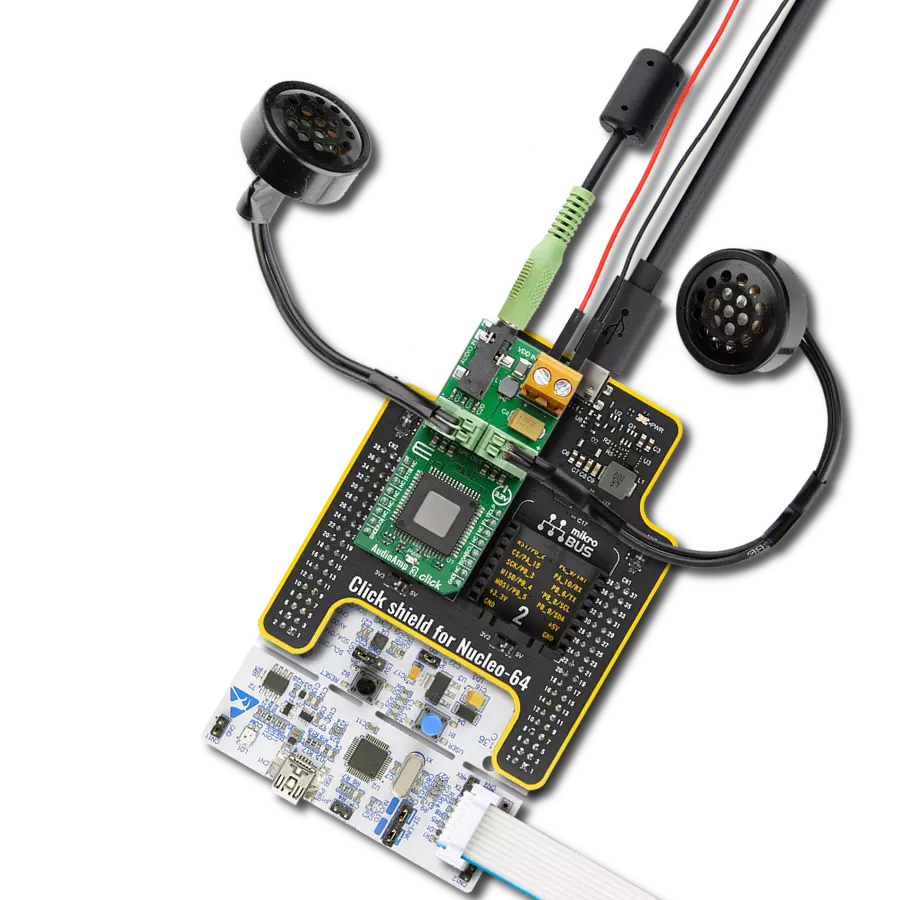Immerse yourself in a world of pristine sound – our amplifying solution, your passport to sonic excellence.
A
A
Hardware Overview
How does it work?
AudioAMP 12 Click is based on the TS2007FC, a filter-free class-D audio amplifier from STMicroelectronics. The amplifier can work in differential configuration or single-ended input configuration. You can choose one over the INPUT SEL jumper, where the SE (single-ended) is set by default. The amplifier is a monolithic, fully differential input/output amplifier, which includes a common mode feedback loop that controls the output bias value to average it in correlation to the DC common mode input voltage range. This, in turn, allows the amplifier always to have a maximum output voltage swing and maximize the output power. Compared to the single-ended topology, the output is four times higher for
the same power supply voltages. The amplifier allows switching between two fixed gains: 6 or 12dB (2 or 4V/V gain). It also features thermal shutdown protection, output short-circuit protection, and a low pop-and-click noise, where the signal-to-noise ratio is typically 90dB. The pop-and-click reduction circuitry and low ON/OFF switching noise typically allow the amplifier to start within 1ms. You can also choose the Standby mode function, which keeps the current consumption down to 1μA. This Click board™ features a standard 3.5mm audio jack to connect the audio input. In addition to the audio jack, there is also an unpopulated 3-pin header if you want to connect the audio input by other means.
AudioAMP 12 Click allows connecting one speaker over the onboard terminal. This Click board™ uses general-purpose input/output pins to communicate with the host MCU. Using the GS pin, you can select one of the available gains with IOs logic states. The STB pin is a Standby pin with active LOW logic. This Click board™ can operate with either 3.3V or 5V logic voltage levels selected via the VCC SEL jumper. This way, both 3.3V and 5V capable MCUs can use the communication lines properly. Also, this Click board™ comes equipped with a library containing easy-to-use functions and an example code that can be used as a reference for further development.
Features overview
Development board
Curiosity PIC32 MZ EF development board is a fully integrated 32-bit development platform featuring the high-performance PIC32MZ EF Series (PIC32MZ2048EFM) that has a 2MB Flash, 512KB RAM, integrated FPU, Crypto accelerator, and excellent connectivity options. It includes an integrated programmer and debugger, requiring no additional hardware. Users can expand
functionality through MIKROE mikroBUS™ Click™ adapter boards, add Ethernet connectivity with the Microchip PHY daughter board, add WiFi connectivity capability using the Microchip expansions boards, and add audio input and output capability with Microchip audio daughter boards. These boards are fully integrated into PIC32’s powerful software framework, MPLAB Harmony,
which provides a flexible and modular interface to application development a rich set of inter-operable software stacks (TCP-IP, USB), and easy-to-use features. The Curiosity PIC32 MZ EF development board offers expansion capabilities making it an excellent choice for a rapid prototyping board in Connectivity, IOT, and general-purpose applications.
Microcontroller Overview
MCU Card / MCU
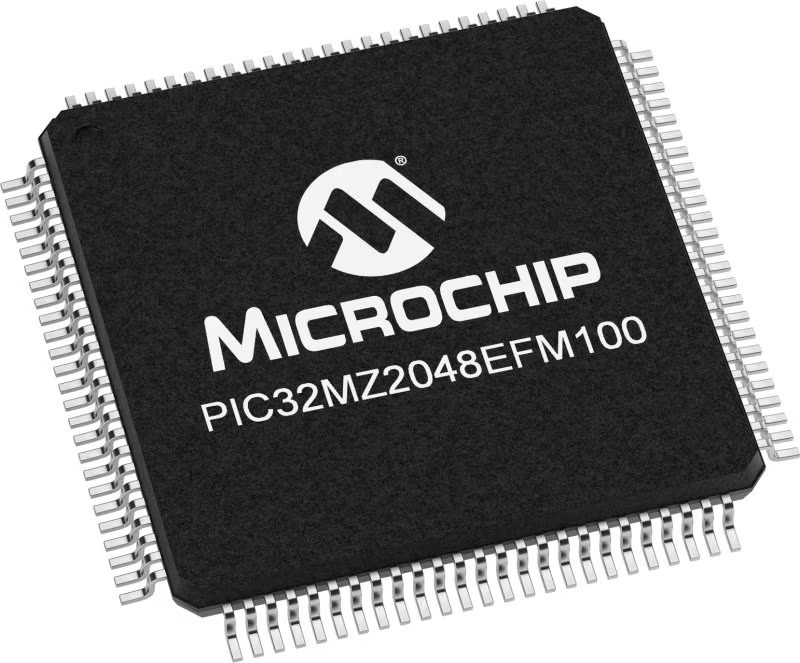
Architecture
PIC32
MCU Memory (KB)
2048
Silicon Vendor
Microchip
Pin count
100
RAM (Bytes)
524288
Used MCU Pins
mikroBUS™ mapper
Take a closer look
Click board™ Schematic
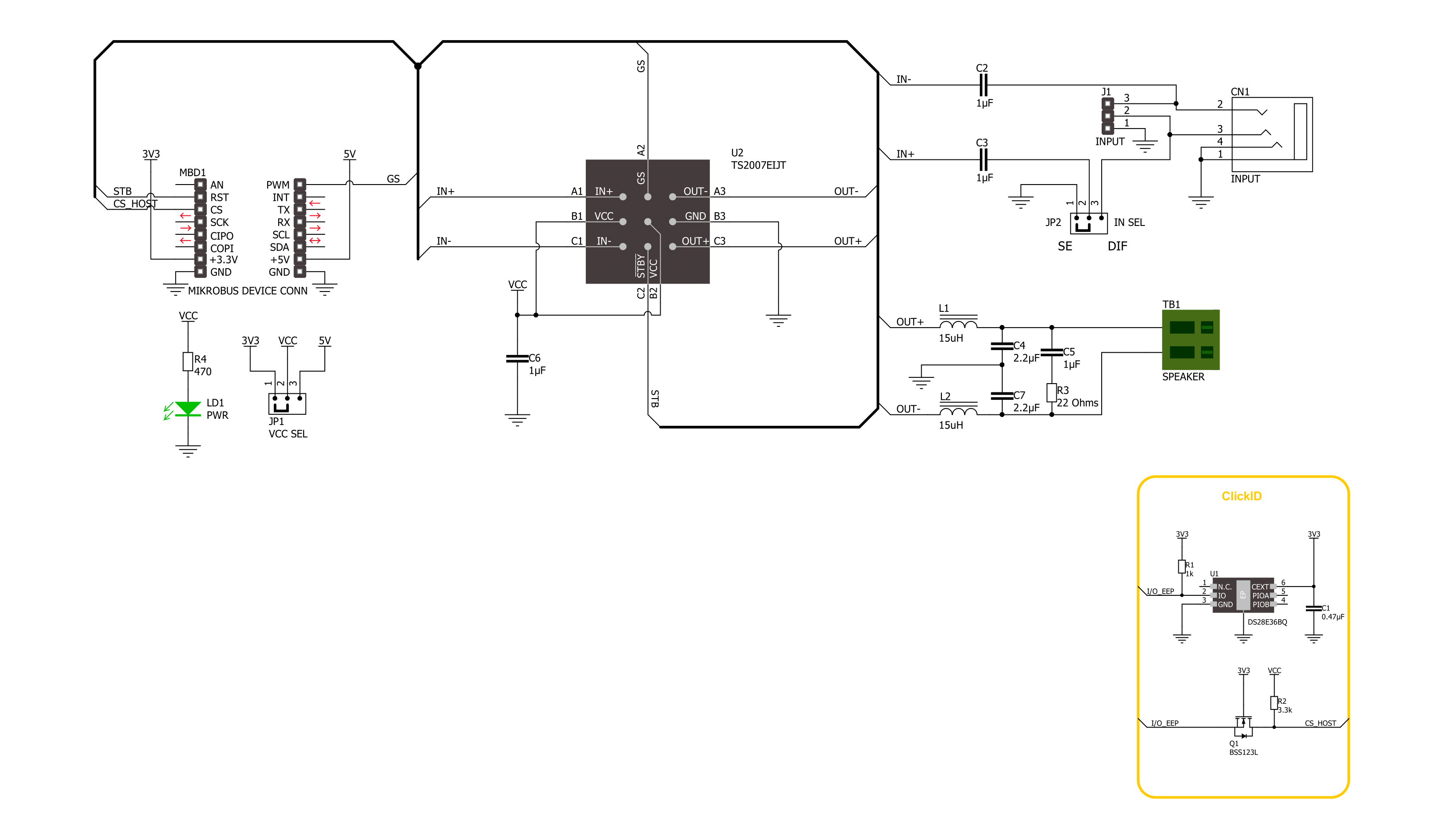
Step by step
Project assembly
Track your results in real time
Application Output
1. Application Output - In Debug mode, the 'Application Output' window enables real-time data monitoring, offering direct insight into execution results. Ensure proper data display by configuring the environment correctly using the provided tutorial.

2. UART Terminal - Use the UART Terminal to monitor data transmission via a USB to UART converter, allowing direct communication between the Click board™ and your development system. Configure the baud rate and other serial settings according to your project's requirements to ensure proper functionality. For step-by-step setup instructions, refer to the provided tutorial.

3. Plot Output - The Plot feature offers a powerful way to visualize real-time sensor data, enabling trend analysis, debugging, and comparison of multiple data points. To set it up correctly, follow the provided tutorial, which includes a step-by-step example of using the Plot feature to display Click board™ readings. To use the Plot feature in your code, use the function: plot(*insert_graph_name*, variable_name);. This is a general format, and it is up to the user to replace 'insert_graph_name' with the actual graph name and 'variable_name' with the parameter to be displayed.

Software Support
Library Description
This library contains API for AudioAMP 12 Click driver.
Key functions:
audioamp12_change_gain- AudioAMP 12 changes the gain function.audioamp12_gain_select- AudioAMP 12 select gain level function.audioamp12_set_mode_operation- AudioAMP 12 set operation mode function.
Open Source
Code example
The complete application code and a ready-to-use project are available through the NECTO Studio Package Manager for direct installation in the NECTO Studio. The application code can also be found on the MIKROE GitHub account.
/*!
* @file main.c
* @brief AudioAMP 12 Click Example.
*
* # Description
* This example demonstrates the use of AudioAMP 12 Click board™.
* The library contains an API for switching between two gain settings
* and device control selection between operation and standby mode.
*
* The demo application is composed of two sections :
*
* ## Application Init
* Initialization of GPIO module and log UART. After driver initialization,
* the app sets default settings performs a power-up sequence, and sets the sound volume to 6 dB.
*
* ## Application Task
* The app performs circles the volume switch between two gain settings,
* 6 dB or 12 dB, every 5 seconds.
* Results are being sent to the UART Terminal, where you can track their changes.
*
* @author Nenad Filipovic
*
*/
#include "board.h"
#include "log.h"
#include "audioamp12.h"
static audioamp12_t audioamp12; /**< AudioAMP 12 Click driver object. */
static log_t logger; /**< Logger object. */
void application_init ( void )
{
log_cfg_t log_cfg; /**< Logger config object. */
audioamp12_cfg_t audioamp12_cfg; /**< Click config object. */
/**
* Logger initialization.
* Default baud rate: 115200
* Default log level: LOG_LEVEL_DEBUG
* @note If USB_UART_RX and USB_UART_TX
* are defined as HAL_PIN_NC, you will
* need to define them manually for log to work.
* See @b LOG_MAP_USB_UART macro definition for detailed explanation.
*/
LOG_MAP_USB_UART( log_cfg );
log_init( &logger, &log_cfg );
log_info( &logger, " Application Init " );
// Click initialization.
audioamp12_cfg_setup( &audioamp12_cfg );
AUDIOAMP12_MAP_MIKROBUS( audioamp12_cfg, MIKROBUS_1 );
if ( DIGITAL_OUT_UNSUPPORTED_PIN == audioamp12_init( &audioamp12, &audioamp12_cfg ) )
{
log_error( &logger, " Communication init." );
for ( ; ; );
}
audioamp12_default_cfg ( &audioamp12 );
log_info( &logger, " Application Task " );
}
void application_task ( void )
{
audioamp12_gain_select( &audioamp12, AUDIOAMP12_GAIN_6_DB );
log_printf( &logger, " Gain set to 6 dB.\r\n" );
Delay_ms ( 1000 );
Delay_ms ( 1000 );
Delay_ms ( 1000 );
Delay_ms ( 1000 );
Delay_ms ( 1000 );
audioamp12_gain_select( &audioamp12, AUDIOAMP12_GAIN_12_DB );
log_printf( &logger, " Gain set to 12 dB.\r\n" );
Delay_ms ( 1000 );
Delay_ms ( 1000 );
Delay_ms ( 1000 );
Delay_ms ( 1000 );
Delay_ms ( 1000 );
}
int main ( void )
{
/* Do not remove this line or clock might not be set correctly. */
#ifdef PREINIT_SUPPORTED
preinit();
#endif
application_init( );
for ( ; ; )
{
application_task( );
}
return 0;
}
// ------------------------------------------------------------------------ END



















